Camera tracking shares sound location data from Nureva audio conferencing systems with selected third-party cameras. This integration allows a camera to steer its view based on the microphone pickup in the room.
What is sound location data and why is it helpful?
Microphone MistTM technology provides clear and consistent full-room microphone pickup. By filling a space with thousands of virtual microphones, Nureva can provide accurate location data for where people are talking within the room. Sound location data is used by selected third-party cameras to steer camera views, allowing remote participants to easily follow conversations and see who is speaking. This data can also be used to switch between cameras in a multi-camera room automatically.
Supported integrations
Nureva has collaborated with leading camera companies to integrate sound location data with supported cameras. This integration requires configuring Nureva Console and setting up the third-party camera's software.
Setting up camera tracking
Required before you start
-
One of the following Nureva audio conferencing systems
- HDL300 or Dual HDL300 with firmware version 3.1.9 or newer
- HDL310 with firmware version 1.2.2 or newer
- HDL410 with firmware version 1.2.2 or newer
-
Nureva Console (cloud or client)
- Desktop client version 2.6.201042 or newer
- Nureva Console cloud account
- A third-party camera with integration software that supports using sound location data
- Reviewing the third-party camera's user guide
Enabling Local integrations for camera tracking
Nureva Console client
The examples shown below depict an HDL310 system. These steps also apply to the HDL300, Dual HDL300 and HDL410 systems.
- Launch the Nureva Console desktop client
- From the Devices dashboard, scroll down to the Integrations section
- Open the Local integrations menu
- Enable local integrations by sliding the toggle to the right
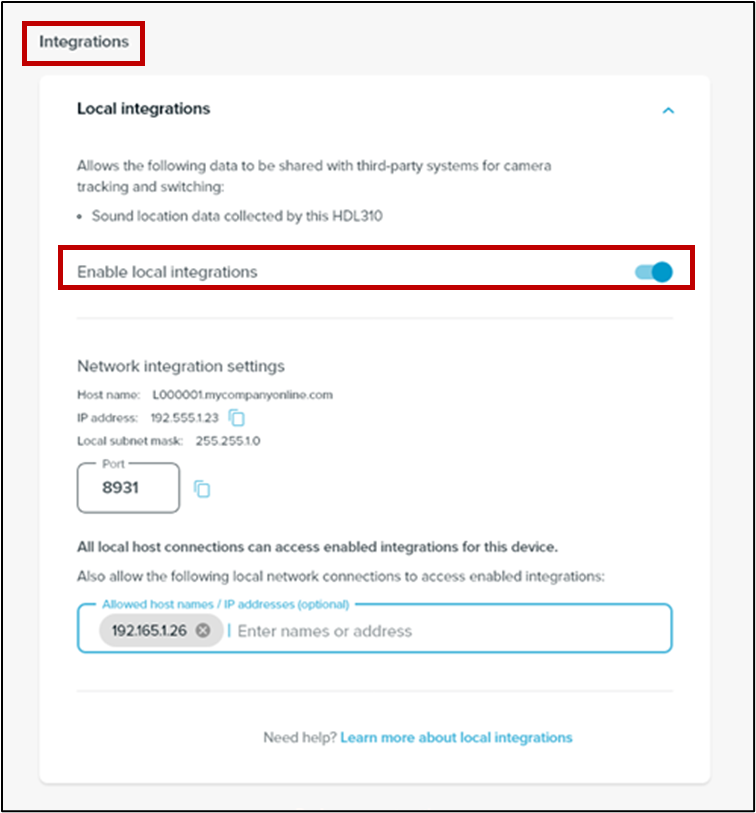 |
- Once Local integrations are enabled, a notification will indicate the feature is active
 Nureva Console cloud
Nureva Console cloud
-
- Log in to your Nureva Console cloud account
- From the Devices dashboard, scroll down to the Integrations section
- Open the Local integrations menu
- Enable Local integrations by sliding the toggle to the right
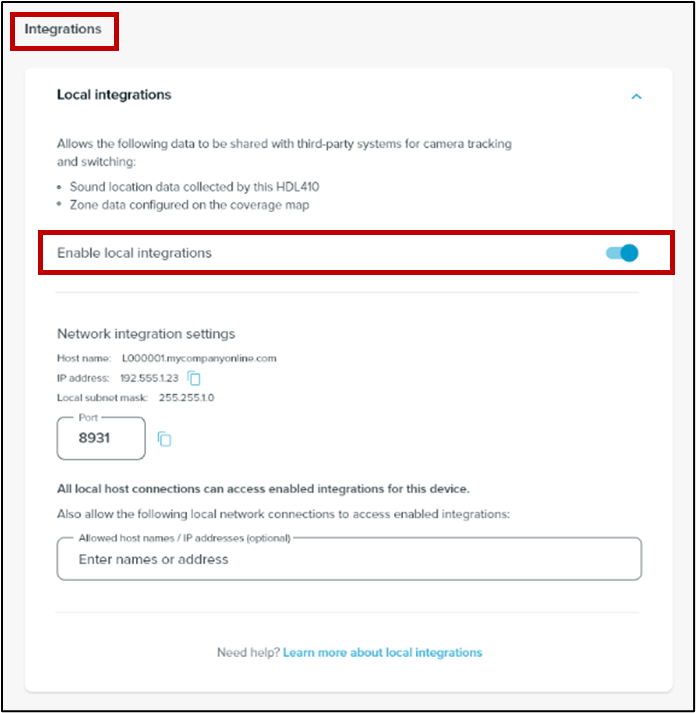 |
- Press the Apply button
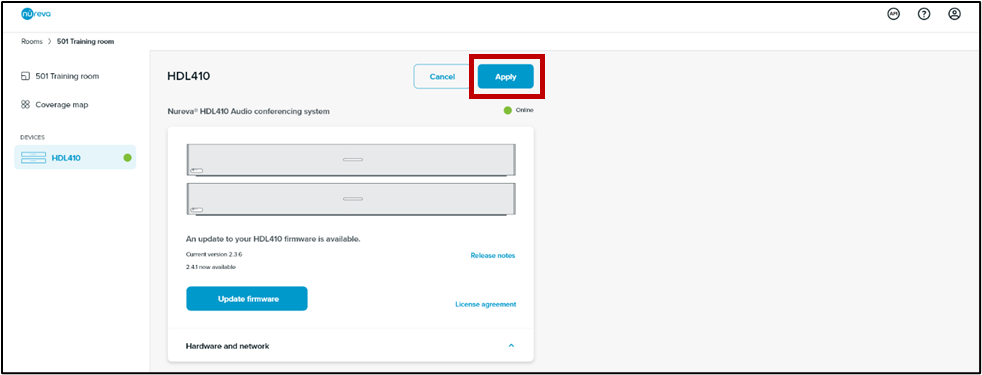
Once the Local integrations are enabled, a notification will indicate that the feature is active

Configure third-party camera software
⚠ Reviewing the user guides for the third-party software is recommended before proceeding. Sometimes features may only be available with specific versions of third-party software. Please find out from the camera manufacturer which version of the software you will need and if there is an additional cost to use the software or features.
When local integrations have been enabled in Nureva Console (cloud or client), the camera will begin to receive sound location data. Each camera's setup is unique, with some requiring specific settings to be adjusted or data to be entered. Please consult the user guide for the camera and its companion software for information about setting up camera tracking or sound location features.
Requests for host name and port number
Some third-party cameras may require the host name and the port number to be manually entered. This information is available from the local integrations dashboard below the toggle to enable integration. Buttons are available to copy and paste the information into the camera software. The port number is configurable and can be set to an open port on the network.

NOTE: The port number is configurable and can be set to an open port on the network.
Allowing device access to sound location data
Local computer connections are allowed by default. In some cases, it might be necessary to allow access to the sound location data to specific host names or IP addresses. The additional host names and IP addresses can be entered into the field below the network integration settings information.

- Host names and IP addresses can be removed by clicking on the ⊗ next to the entry
Troubleshooting
- If Nureva Console (cloud or client) is unable to start local integrations
- A yellow notification with issue details will be shown

- Verify that the port is not already being used
- If the port is already in use, enter a valid number for an open port
- Verify that the host names and IP addresses have been entered correctly
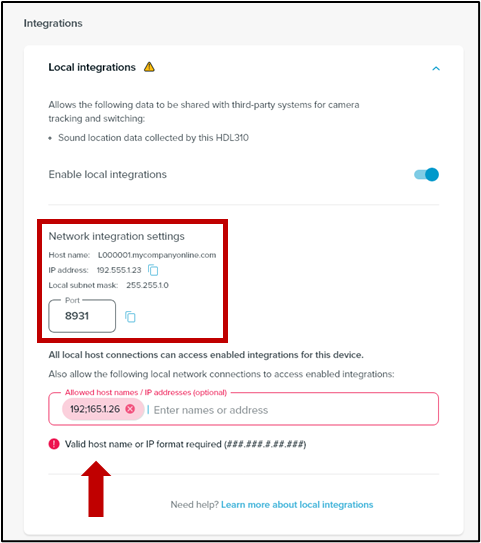
- If Nureva Console (cloud or client) is not reporting any errors, but local integrations are not functional
- Consult with the third-party camera's technical support
- If additional assistance is needed, contact the Nureva support team
How should the HDL410 microphone and speaker bars be mounted?
For the HDL410 system to provide the most accurate sound location data, Nureva recommends that the microphone and speaker bars be installed on opposite or perpendicular walls. Positioning the microphone and speaker bars this way produces accurate X and Y data. Recommended installation options for using sound location data from the HDL410 system are shown in the diagrams below.
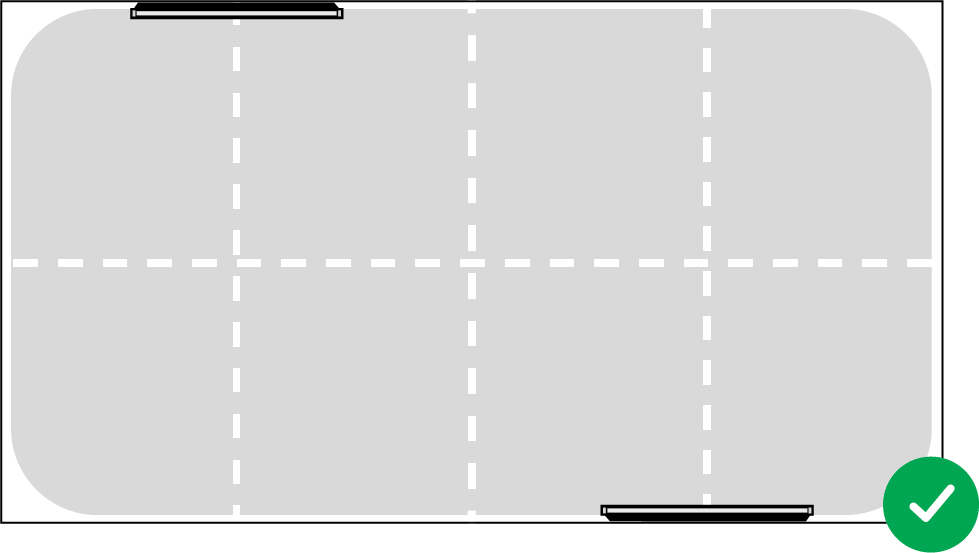 |
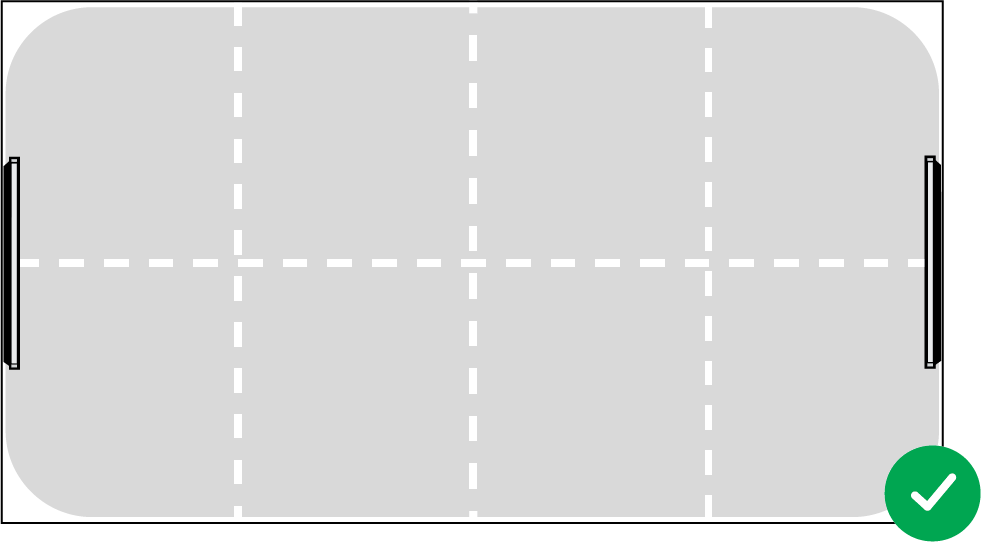 |
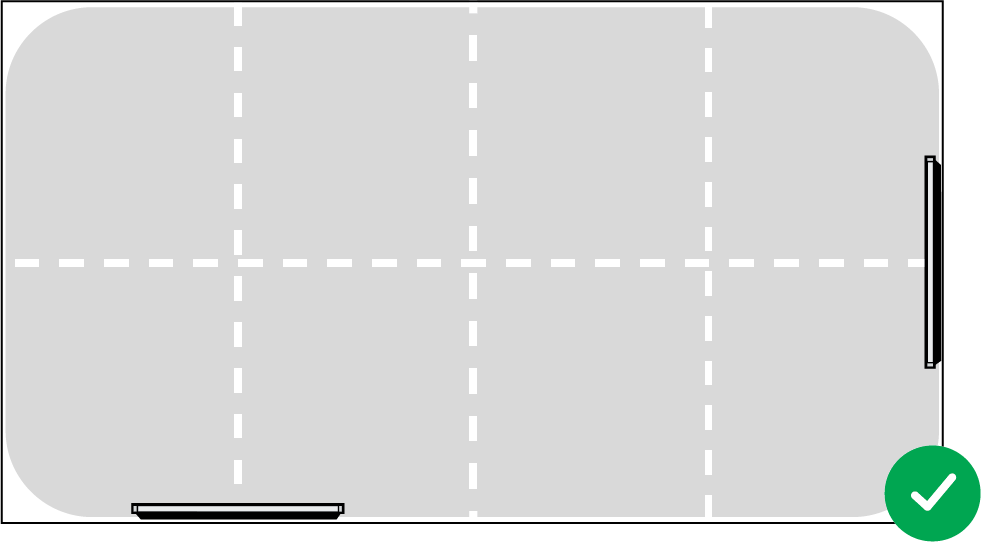 |
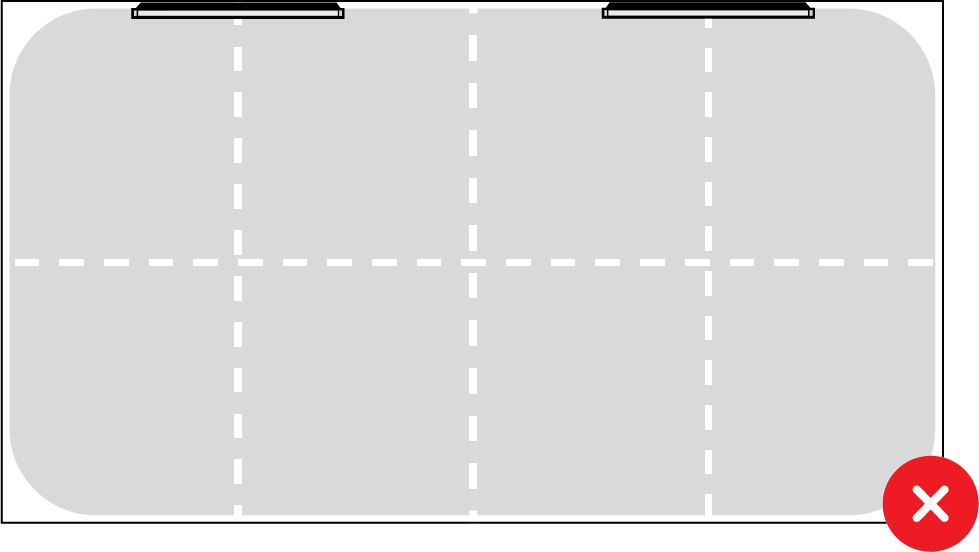 |
NOTE: The HDL410 microphone and speaker bar placement shown above is for optimum sound location data accuracy. For installations that are not using sound location data please refer to the HDL410 Quick Start Guide for placement options.
Nureva Developer Toolkit
Nureva’s Developer Toolkit offers easy-to-use APIs for Nureva devices. Through the toolkit, there are APIs for developers to use sound location data for supported third-party cameras.